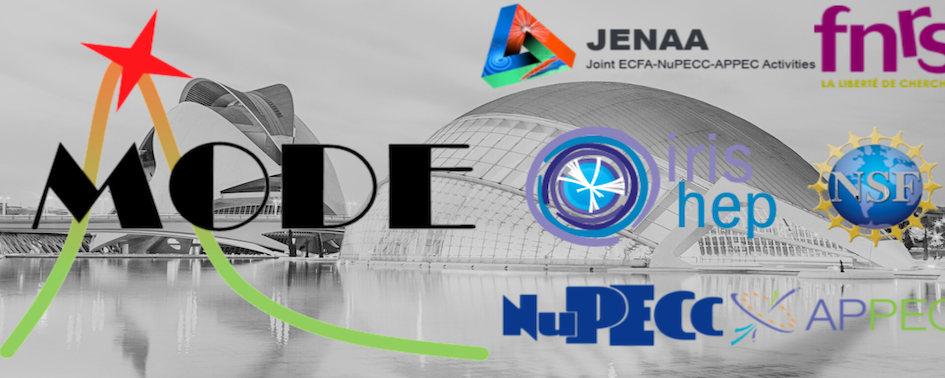Speaker
Description
In the HypHI project, which started in 2006 at GSI-FAIR, we aim to study proton- and neutron-rich hypernuclei produced in the ion-induced collisions. The successful observation of light hypernuclei in the 6Li – 12C collisions during our first experimental campaign in 2009 – 2010 has paved a new way to study these bound states of protons, neutrons, and hyperons [1]. For future experiments, both the Fragment Separator (FRS) of GSI and the Superconducting Fragment Separator (SuperFRS) of FAIR are needed to produce those exotic hypernuclei. A new experimental campaign was designed using solenoid magnet and the central detection system of WASA in the middle focal plane of FRS, which combines the hadron spectrometer capabilities of WASA with the high-resolution forward spectrometer capabilities of the second half of FRS. The experimental goal is to demonstrate that the production and study of hypernuclei can be achieved by this new experimental method [2]. In future experiments involving fragment separators and solenoid spectrometers to study proton- and neutron-rich hypernuclei, a thorough study of the optimal conditions of the experimental setup is crucial.
Our contribution to this workshop will be the presentation of the optimal conditions we obtained through optimal design of experiment already published in [3]. We will introduce the concept of optimal design, which aims to identify the most suitable experimental settings for the production of exotic hypernuclei. To achieve this, we evaluated different experimental variables and conditions needed to be set at SuperFRS, including: type of primary beam, type of secondary beam, energy beam, transmission efficiencies of the primary and secondary beams. Those conditions are then coupled to a QMD theoretical model of nuclear collisions for the hypernuclear production. Depending of the secondary beam species, beam energy and intensities, and the target materials, the production of proton- or neutron-rich hypernuclei are widely impacted. Through a multivariate analysis, the optimal experimental conditions for 40 different exotic hypernuclei were summarized.
In our presentation, we will delve into the details of our methodology, providing an explainable overview of how we arrived at these optimal conditions.
[1] C. Rappold et al., Hypernuclear spectroscopy of products from 6Li projectiles on a carbon target at 2AGeV, Nuclear Physics A. 913, p.170 (2013)
[2] T. Saito et al., New directions in hypernuclear physics, Nature Review Physics: 3, p. 803. (2021)
[3] C. Rappold and J. López-Fidalgo, Examination of experimental conditions for the production of proton-rich and neutron-rich hypernuclei, Physical Review C. 94, pp.044616 (2016)
